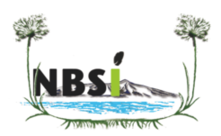Biodiversity
Biodiversity means the diversity of life. It is the variation at different levels of biological organization, from genetic variation (differences) between individuals of the same species, to differences in populations of individuals belonging to the same species, to different species (a soecis is a group of similar organisms capable of interbreeding with each other), to communities of different species living side by side in a given ecosystem or habitat, to larger scale ecosystems encompassing several populations and communities sharing a common landscape.
In the Lake Naivasha Basin, the variety of life forms is related to the diversity of landscape features going from dry savannahs at 1800 m a.s.l. to mountain plateaux with rainforest at 2500 m and moorlands above 2900 m. The basin comprises a large number of water body types including freshwater, brackish and saline lakes, streams, riparian wetlands and a large number of small man-made dams.
The Basin's geological origin is volcanic, characterised by highly mineralised rocks and nutrient rich soils that sustain its high productivity and the great variety of biological forms.
During the last century, increasing human population densities developed infrastructure around the lake, severely reduced the forest cover and significantly increased soil erosion. The arrival of human communities from different parts of the East African region and the world brought with it a rising number of small and large organisms, foreign to the basin biodiversity. Several of these alien species outcompeted local ones, sometimes taking control of whole ecosystems; this led to significant impacts on local inhabitants that base their livelihoods on the sustainable exploitation of the basin resources.
- Lakes and riparian biodiversity
- Streams & rivers
- Vegetation & ecosystem types
- Human modified ecosystems
- Alien species



